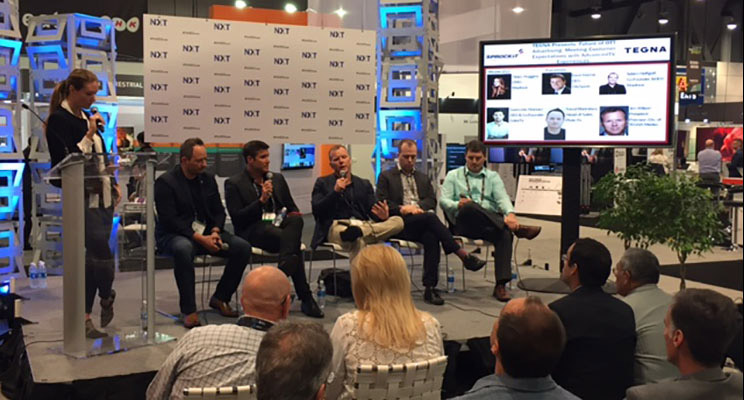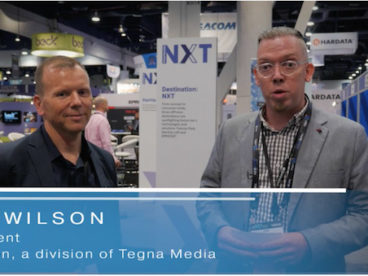Five OTT Advertising Takeaways from NAB

At this year’s NAB, I hosted a panel session with fellow panelists Raoul Marinescu, Head of Sales at Pluto TV; Adam Helfgott, CEO of MadHive; Giancarlo Maniaci, CEO at ColorTV and David Haynie, CEO at CitySpark. Stacy Huggins, CMO of MadHive moderated the panel.
The session explored the future of over-the-top (OTT) advertising and what it takes to shift more ad dollars to OTT, how to monetize content, how to meet customer expectations and the importance of data in AdvancedTV experiences.
Here are the five key takeaways from our thought-provoking discussion:
Education is the biggest barrier right now for OTT
Some refer to OTT as only video that is delivered by a streaming device through a television rather than content that is streamed through a tablet or a smartphone. Some agencies refer to OTT video as AdvancedTV, whether it’s short form or long form. Some even lump OTT into Cable VOD, which are clearly two different offerings targeting different audiences. Although OTT viewership is growing rapidly, there are differences of opinion about it. At Premion, we define it as premium, long-form episodic streaming video outside of a cable subscription. We also access our inventory through direct partnerships while others source from exchanges.
Furthermore, a number of agencies are still grappling to figure out where OTT lives within their own internal structures. In some instances, we see the buying coming out of TV while others treat it as digital. With greater education and investment in OTT digital capabilities, we hope to see it own its own place inside of agencies.
Improve content discovery and curate local experiences for consumers
The good news for consumers is that with streaming OTT apps, you can pretty much watch whatever content you want, whenever you want. The bad news is the experience in trying to find it. We are seeing the rollout of enhanced content discovery features such as voice-activated search that’s helping to improve the consumer experience.
Giancarlo Maniaci at ColorTV pointed out that aside from making sure that you are driving traffic to content properties, customer retention is key and it requires constantly curating content to deliver a more personalized experience for the consumer.
For CitySpark, David Haynie highlighted the opportunities to curate highly relevant, local experiences for OTT audiences. CitySpark can match up content based on what users are watching. For example, if someone is watching a rock-climbing show, they can be served up hyper-local rock-climbing events in the area.
Frequency capping is the industry’s dirty little secret
Our panelists agree that cross-network frequency capping is an important issue that needs fixing, as it remains one of the biggest annoyances for OTT viewers today.
MadHive’s Adam Helfgott says that, “frequency capping is an inventory problem as the same inventory is being made available across multiple providers. While it may be frequency capped on one platform, it’s difficult to know if the same ad is capped on a second platform.” MadHive is working on a meta-data open data management platform to better track and solve this issue.
Need to standardize OTT media buying
To shift more ad dollars and to simplify the OTT media-buying experience requires our industry to come up with and agree on new standards. Raoul Marinescu shared that for Pluto TV, standardization is a top-of-mind issue and right now transactions could be device specific or on Pluto TV’s platform.
To address this issue, we need to build standard audience segments that are portable across the ‘walled gardens’ of OTT providers, but this is a huge undertaking and it will take the cooperation of many to solve this.
Data is the lifeblood for OTT’s future
For OTT advertising to scale, we need to invest more in data, advanced targeting and measurement solutions.
Our panelists shared excitement for the future of OTT, in which there would be a centralized way to target and marry data sources together to have proper attribution back to each data source. Programmatic, data-driven IP-delivered advertising is another way to achieve the long-tail scale needed.
At Premion, targeting is the lifeblood of our business. We deal with local and regional advertisers and they depend on having quality data so they can spend their ad dollars wisely. And they need lots of inventory to scale a campaign that moves the needle.
While it’s still early days for OTT advertising, we are collaborating with our partners to find new ways to address frequency capping across networks, improve standardization and deliver enhanced targeting and engagement vehicles.
By leveraging what we’ve learned from our past and collective experiences, we are helping the industry make sense of it all and drive OTT forward.
—Jim Wilson, President, Premion

